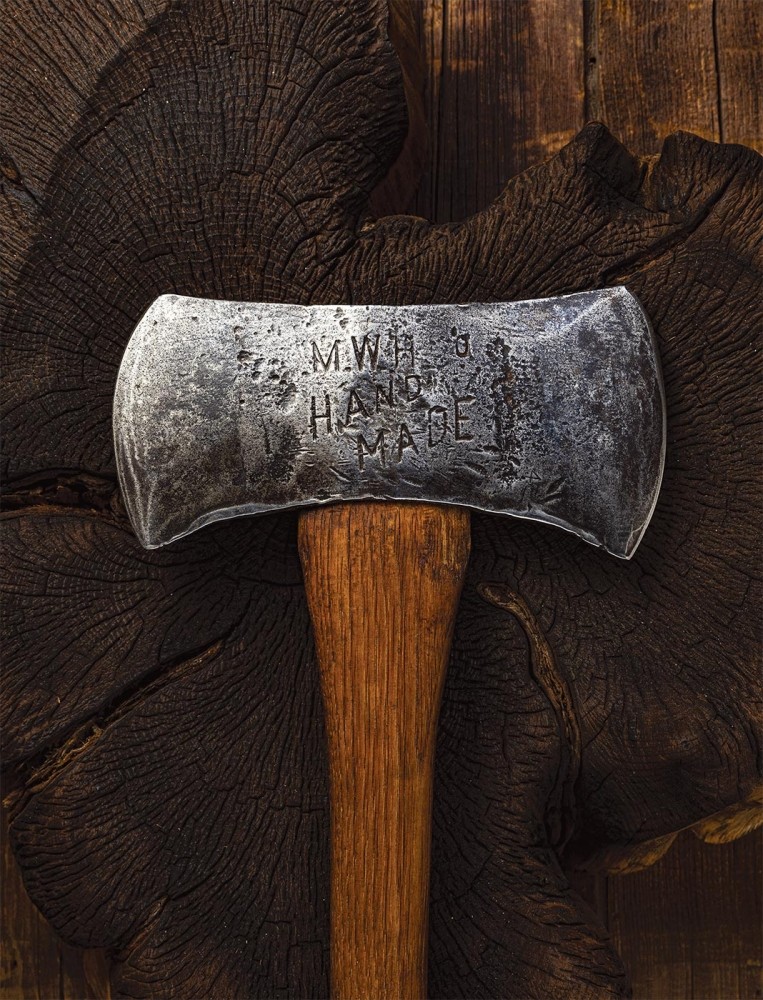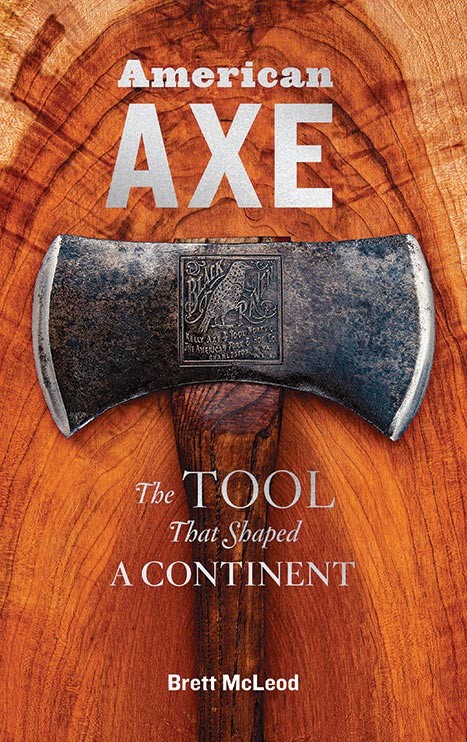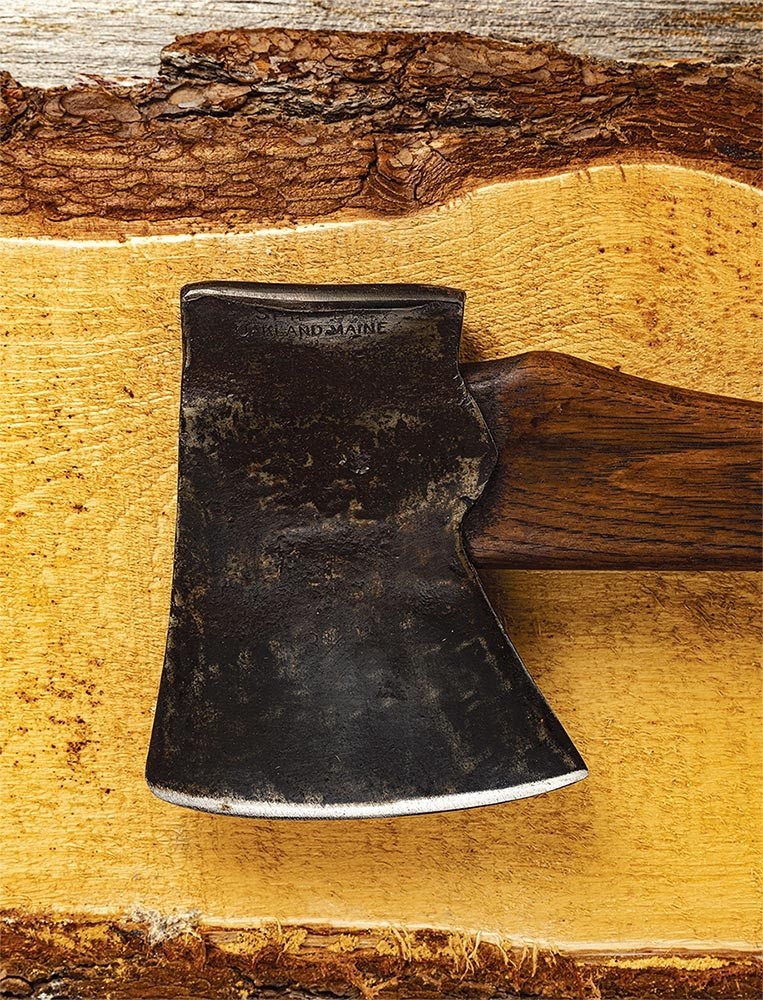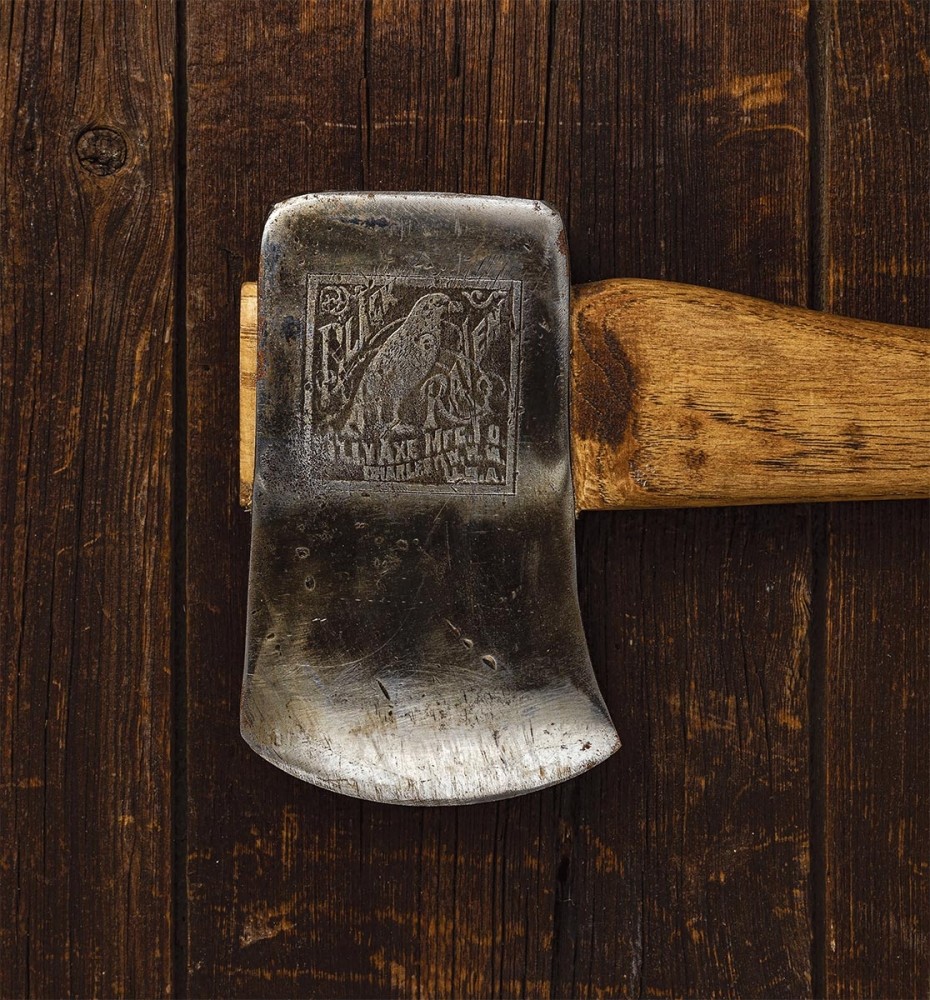
The American landscape has been altered more by the axe than by any other tool. It is estimated that more than 300 million acres of timber were cut prior to the advent of the chainsaw in the mid 1920s. Although some of this wood was cut with crosscut saws in the late 19th and early 20th centuries, most of it was felled, limbed, and bucked entirely with an axe. Because the axe is such a simple tool – it’s essentially a wedge with an edge – it was affordable to produce and acquire, enabling early settlers to carve out an agrarian existence from the forest. The axe was their ticket to a strong shelter, open ground for cultivation, a heat source, and even personal protection.
Although the first European-American axes were hand forged, industrialization would be central to the development and distribution of the axe. Over the course of the late 19th and early 20th centuries there were more than 1,000 different North American axe makers who engaged in a fiercely competitive market selling axes to lumberjacks, homesteaders, farmers, and foresters. What resulted from this lumberjack fever was a seemingly endless array of axe designs with impressive names such as The Woodslasher, Champion, Best Axe, Legitimus, Keen Kutter, Northern King, and the True Temper Perfect axe. Owners of these tools would proudly polish their axes to a mirror shine and argue the superiority of their chosen maker.
For some, the American axe has come to represent brute strength, the taming of nature, and even violence (Lizzy Borden comes to mind). But it’s also a symbol of hard work, honesty, and simplicity. It’s a tool that combines strength, utility, and aesthetic appeal – that’s part of what makes them so fascinating and collectible.
Today, these vintage axes are being resurrected by both wood cutters and collectors alike. From a practical standpoint, vintage axes offer higher quality steel that holds a sharper edge than modern hardware store axes. For axe collectors like me, the lore associated with these tools is irresistible.
The slippery slope to obsessive axe collecting – what I call “axe-oholism” – always begins with pure, utilitarian intentions. Usually it’s something like, “I need to clean up that old Boy Scout axe for this summer’s camping trip,” or, “I really should have a decent hatchet for splitting kindling.” Over time, you’ll discover that your love for the old axe you just restored runs so deep that you need another. If you can’t admit that you need another, consider blaming the axe. Maybe the axe is lonely sitting in the corner of the garage without any companions? Or perhaps you’ve committed a cardinal sin and used a felling axe for splitting wood. (Time to scout out an old maul!) Consider yourself warned; you, too, may become an axe-oholic.
May your axe always have a keen edge!
THE DOUBLE-BIT AXE
A variation of the single-bit felling axe was the double-bit axe, sometimes referred to as a “reversible.” These axes first appeared in Pennsylvania between 1840 and 1850 and were commonly used in the Northeast by the 1860s. The debate continues as to whether a single-bit or double-bit axe is superior. Single-bit aficionados point to the fact that this axe benefits from a heavy poll, which allows the axe to penetrate deep into the wood.
Those who prefer the double-bit axe point to its utilitarian benefit: one bit can be kept stoutly sharpened for cutting knots and dirty wood, while the other can be finely honed for cutting clear and clean wood. Although this explanation appears straightforward, there are a variety of underlying reasons why the double-bit axe became so popular. First, consider the time frame in which it appeared; the 1840s represented a time of mass immigration to the United States. Although a generation earlier an immigrant would certainly expect to be pioneering, the antebellum period brought greater specialization of work, spurred on by increasing demand for virtually everything. This meant that the axe was no longer simply a multiuse tool of the homestead; it became a specialized tool for the industrial lumberjack. These lumberjacks were paid based on production, so having two bits (with one reserved for the dirty work) meant that less time was spent sharpening and more time was spent chopping. Additionally, new forging techniques made producing double-bit axes more economical, as hand forging a double-bit axe was time- consuming and expensive.
THE SPILLER AXE
Over the course of researching this book I spoke with dozens of old lumberjacks and woodsmen and always asked their opinion for the best axe ever made. As you might imagine, there was no shortage of opinions. However, for those who had truly lived by their axe (pulp loggers and trappers throughout the Northeast), the name Spiller was repeatedly mentioned as one of the plainest (no fancy etchings) but finest axes made. It was the tempering of the steel that folks always mentioned – soft enough to file but hard enough to hold an edge, even in frozen wood.
Blacksmith Samuel Spiller got his start in the axe-making trade around 1813. Throughout his career, he made his way around lumber towns of the Northeast setting up shops in New Hampshire, Maine, and New Brunswick, Canada. His sons followed him into the blacksmithing trade, as did his grandson, Mark D. Spiller, who moved the company to Oakland, Maine.
While the axes themselves remained utilitarian, they were given names and paper labels that were meant to sell axes. These included the Choppers’ Choice, The Maine Easy Cut, The Victory Axe, and The Pine Tree Clean Cut Axe.
Spiller continued to produce handmade axes in Oakland until 1965 – a 153-year run by a single family of axe makers. In the end, decreasing demand for axes and more efficient manufacturing processes left Spiller and other axe makers of central Maine unable to compete.
THE BLACK RAVEN
The first time I saw a Kelly Black Raven axe was as a teenager. The old lumberjack who showed me the axe told me that he had bought it used at a barn sale for a dollar. He thought a dollar was rather high, but given that it had a new handle, he sprang for the axe. When I commented that I thought the “embossing” was beautiful, he corrected me and let me know that technically it was “etched,” not “embossed.” Apparently, the paper labels that were over the side of the eye used “embossed” or raised seals as a sign of quality and authenticity. That said, many collectors still use the term “embossed,” which may be a useful search term (if not correct) for locating a Black Raven of your own.
The Black Raven axe was introduced by the Kelly Axe Manufacturing Company in 1904. The axe was manufactured at their foundry in Charleston, West Virginia, and was considered to be a premium axe, with some of the etchings gilded in gold paint (actually a mix of bronzing powder and varnish). These axes also seemed to receive more real estate in wholesale tool catalogues, often to the exclusion of other Kelly brands.
The Black Raven etching was found on single-bit felling axes, double-bit axes, hatchets, and, beginning in 1920, on scythes. The earlier Black Raven axes read “Kelly Axe Mfg. Co.” directly under the raven. The later Black Raven axes read “The American Fork and Hoe Co.” which was a separate branch of the company that took over in 1930. Additionally, these later Black Raven axes also included a “True Temper Kelly Works” etching near the poll of the single-bit axe, and on the opposite side as the raven etching on the double-bit axes. The smaller axes and hatchets used a circular etching of the raven.
It comes as little surprise that collectors would seek out the Black Raven as it is so distinct. As with all vintage axes, the price is heavily influenced by the condition of the axe. Pristine examples can bring auction prices north of $1,000. The good news is that collectors still report finding Black Raven axes at barn sales, auctions, and flea markets for a few dollars.





Discussion *